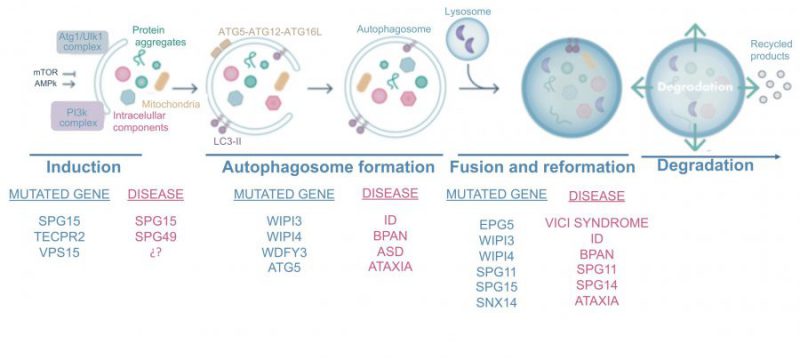Back to article: Towards a better understanding of the neuro-developmental role of autophagy in sickness and in health
FIGURE 3: The autophagy process and most common mutated proteins in neurodevelopmental disorders. Autophagy is a highly conserved process that consists on the formation of a double membrane-vesicle engulfing cytosolic material and organelles, which finally fuses with lysosomes, where the cargo is degraded. ULK1 and PI3K complex participate in the autophagy induction, when the isolation membrane is formed. This membrane is elongated and specific materials are recognized by selective autophagic receptors until the closing and formation of autophagosome. The next step consists on the fusion with lysosomes and/or late endosomes, where cargo degradation takes place by lysosomal hydrolases. Finally, the resulting products are recycled and lysosomes can be reused through the process of lysosome reformation. Neurodevelopmental disorders described with mutations in autophagic genes are compiled according to the autophagic step affected. Defects in WIPI3 and WIPI4 have been found to correlate with ID and BPAN, respectively. The selective autophagic receptor WDFY3 gene, which participates in aggregates removal, is related with high susceptibility of ASD. Rare mutations have been found in the induction gene VPS15 and autophagosome elongating gene ATG5 in ataxic patients. Mutations in SPG11, SPG15 and TECPR2 produce hereditary spastic paraplegias. Finally, the EPG5 and SNX14 genes participating in the autophagosome/lysosome fusion are responsible for the Vici syndrome and ataxic disorders.

